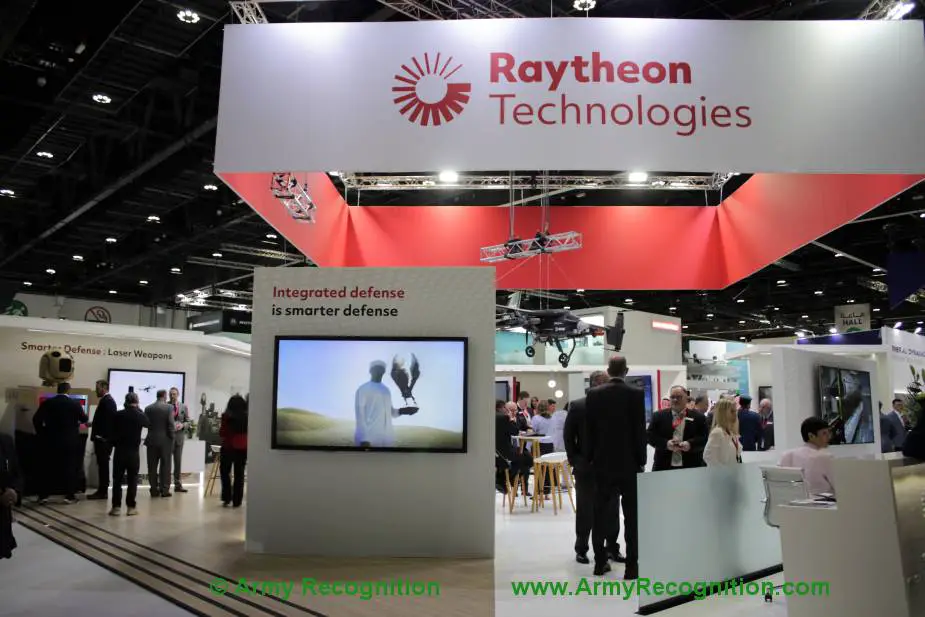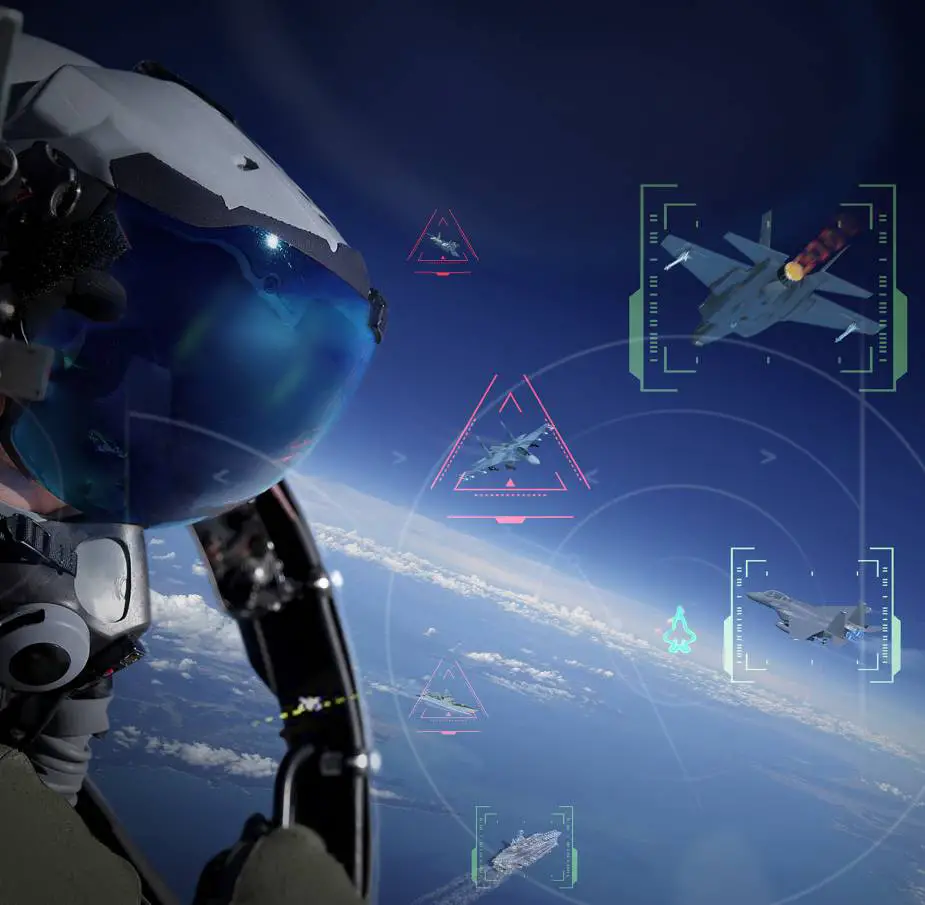For military pilots, sometimes it's best to go radio silent. They turn off their radars, their navigation systems and their radar altimeters, making it harder for enemies to detect them. "Enemy systems today can use an aircraft’s RF energy against itself by using triangulation to find their target," said Joe "Grip" Beissner, who flew the F-15E Strike Eagle in the U.S. Air Force and now works for Raytheon Technologies. "Limiting the transmissions of those RF systems is a primary means to deny the enemy from looking at you first."
Follow Army Recognition on Google News at this link

Raytheon's stand at IDEX 2023. Raytheon Technologies has installed and maintained IFF transponders and interrogators on more than 120 types of aircraft, ships and land vehicles around the world (Picture source: Army Recognition )
While going dark can be a smart defensive measure, it also makes it harder for allied aircraft to identify one another. To reduce the risk of friendly fire, NATO has mandated an upgrade for all identification-friend-or-foe, or IFF, systems, to a version called Mode 5. The new hardware and software allows pilots to interrogate friendly aircraft's IFF systems at longer ranges using a secure, encrypted code.
"If I know everyone in front of my aircraft is hostile, then I have no reason to interrogate them," said Beissner. "But if I'm behind the first wave, I don't necessarily know where all the friendly aircraft are operating. I need to get that information to effectively employ my weapons system."
Mode 5 extends the range of the previous system and upgrades the signaling waveforms, making communications faster and more secure. Mode 4 – in service since the 1960s – uses signals similar to Morse code, while Mode 5's sophisticated modulation techniques works much as modern cellphones do. Its code book changes every few seconds, as opposed to once a day, to prevent interception.
“This is a huge upgrade,” said Frank Whiston, a director at Raytheon Intelligence & Space, a Raytheon Technologies business. “Mode 4, the existing system, has difficulty identifying friendly aircraft from long-range distances, especially when they are flying in close formation. By the time the aircraft was determined unfriendly, they could be right on our guys.”
Mode 5 technology is also faster and more automatic. For example, if an F-15 detects another aircraft, it will send a unique Mode 5 code. If the receiving aircraft has a Mode 5 transponder, Whiston said, "a green light will shine for the pilot to see. This notifies the pilot they are being interrogated but are in the clear". The receiving aircraft's transponder then sends an encrypted message back to the F-15 identifying itself as friendly.
If the receiving aircraft does not have the encrypted code, it won't even respond. "You don't want to give an enemy aircraft the opportunity to squawk friendly and take away your ability to engage from a position of advantage," said Beissner.
Raytheon Technologies has installed and maintained IFF transponders and interrogators on more than 120 types of aircraft, ships and land vehicles around the world. NATO mandated that all IFF systems employ Mode 5 by June 2020.

To reduce the risk of friendly fire, NATO has mandated an upgrade for all identification-friend-or-foe, or IFF, systems, to a version called Mode 5. (Picture source: Raytheon)















